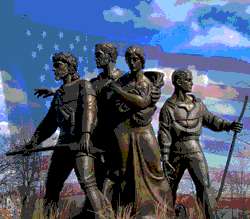Reber Mortuary Records Index
The first comprehensive mortuary service in Elgin was introduced by James A. Palmer, who came to Elgin about 1873. Prior to this undertakers usually provided coffins and a hearse but other arrangements were up to the family. With a partner, Fred T. Norris, he provided a complete funeral service including the necessary arrangements. Palmer retired in 1907 but his partner continued to expand acquiring a motorized hearse in 1915 and building Elgin's first complete funeral parlor at 226 E. Chicago street. Clarence A. Reber began working for Norris during his senior year at Elgin High in 1918. During the Palm Sunday tornado of 1920, Clarence drove the Model T ambulance to transport the injured to Sherman Hospital through streets blocked with rubble and tree limbs. After graduating from Worsham College of Mortuary Service in 1925, he continued with Norris and began keeping records of the more than 6000 funerals in which he participated. After Fred Norris died in 1950, Clarence was left an interest in the firm and with Russell Norris operated the Norris-Reber Mortuary unti1 1962 when he established the Reber Mortuary Service in the same building. In 1968, he moved to the Schmidt Funeral Home where he operated independently of the Schmidt business. Clarence retired in 1989 but continued to conduct funerals for a few close acquaintances. After Clarence died on June 20, 1997, his extensive files were donated to the Elgin Area Historical Society where they remain as part of the Society's extensive holdings
History submitted by Mr. George Albee
About the Index:
The early records consist of an index card only with meager personal information; usually Name, Date of death and/or date of burial, and most often where the person was buried. That last field may be the cemetery or the city/town and state to which the body was shipped. After 1925, additional information was added and, eventually, file folders were used to hold various documents such as death certificates, coroner's reports, etc. However, even some of the earliest records may contain previously unknown information and are probably worth looking into.
The fields extracted for this index were:
Title Name (When possible the maiden name of a married woman is included.) Date of Death (Where noted the date used is the burial date.) Obituary (If yes, an obituary is either attached to the index card or in the folder.) Record Type ( Indicates index card, C; file folder, F; or both, B.)
To obtain copies:
Copies of the records for individuals found on the index can be requested through through a website request. We request a $5.00 donation to our Acquisition Fund (see research policy), plus $.25 per page copied, plus postage. The researcher will notify you of the total amount after the request has been completed.


